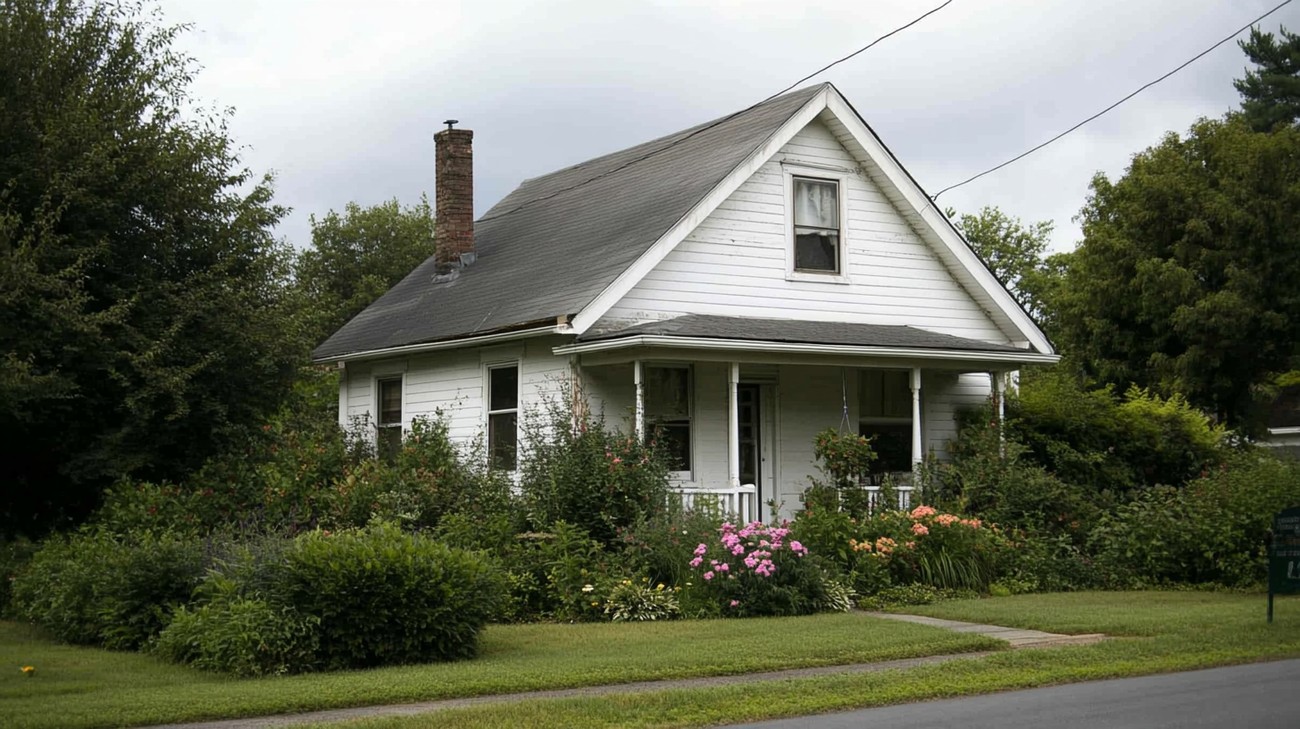Asbestos siding, known for its longevity, fire resistance properties, and affordability, is a product once widely used in the building industry. Despite its functionality, its potential health risks have led to its phased-out use. Today, it's crucial homeowners, purchasers, builders, and inspectors understand this material and its implications.
History of Asbestos Siding
Asbestos siding came into prominence around the middle of the 20th Century. Its durability combined with its fire-resistance properties made it an automatic choice for home builders at the time.
- 1910 - 1940: Application of raw asbestos was incorporated in the construction industry.
- Mid-20th Century: Asbestos siding was introduced and became common, owing to the boom in post-war housing.
Understanding Asbestos Material
Asbestos is a naturally occurring fibrous silicate material. The term "asbestos" is a generic designation for a group of six naturally occurring mineral fibres. These fibres are resistant to heat, electrical, and chemical damage.
The two primary types of asbestos are:
- Serpentine: Characterized by its layered structure and curly fibres, White asbestos (Chrysotile), falls under this category. This type is most commonly used in buildings.
- Amphibole: It has a chain-like structure leading to needle-shaped fibres. Amphibole asbestos includes Crocidolite, Amosite, Anthophyllite, Tremolite, and Actinolite.
Identification of Asbestos Siding
Identifying asbestos siding requires proper understanding and inspection. Older homes, particularly those constructed between 1920 and 1980, may have asbestos siding. It's essential to examine your home's exterior for shingle or siding materials that appear layered and are brittle or have a dimpled texture. Additionally, asbestos siding tiles are often larger than contemporary siding material and are usually eight inches by two feet.
Health Risks Associated with Asbestos Siding
When the microscopic asbestos fibres released into the air, they can be inhaled or ingested by humans, leading to serious health concerns. Asbestos exposure can lead to:
- Lung disease, asbestosis, and mesothelioma, which is a rare form of cancer.
- Pleural plaques, widespread thickening of the membrane surrounding the lungs.
Known as a silent killer, asbestos diseases can take from 15 to 60 years to develop after exposure.
Legal Implications of Asbestos Siding
While using asbestos in construction materials is not completely banned in some countries, it is heavily restricted. Regulations set by Environmental Protection Agency (EPA) and Occupational Safety and Health Administration (OSHA) highlight the legal implications of improper handling and disposal of asbestos materials.
When to Replace Asbestos Siding
Asbestos siding replacement should be considered if:
- Asbestos-containing material (ACM) is friable (easily crumbled by hand), increasing the risk of fibre release.
- The siding is damaged, broken, cut, drilled, or sawed.
- Renovations or demolitions are planned.
It's recommended that homeowners seek professional help in these situations due to the potential risks involved.

Frequently Asked Questions about Asbestos Siding
How can I identify asbestos siding?
Asbestos siding has a distinct appearance; it is usually gray to gray-white, more rigid than modern vinyl or metal siding, and often forms a wave or shingle pattern on the house. However, it's impossible to confirm the presence of asbestos simply by looking at it. If you suspect your siding might contain asbestos, contact a professional to take a sample and carry out proper testing.
Can asbestos siding be covered or encapsulated?
Yes. As long as the asbestos siding is in good condition, you can cover or encapsulate it instead of removing it. This can reduce its potential health risk. Encapsulation typically involves applying a sealant to keep any asbestos fibers from getting into the air. Covering usually involves installing a new layer of siding over it. Both methods should be carried out by an accredited professional.
What should I do if my asbestos siding is damaged?
If your asbestos siding is damaged, it’s best to contact an asbestos abatement professional. They can assess the condition of the siding and recommend whether to repair, encapsulate, or remove it. It's not recommended to handle damaged asbestos siding yourself, due to the potential health hazards.
How is asbestos siding removed?
Asbestos siding removal should always be undertaken by a certified professional. The process involves several steps, including: first setting up a containment area to prevent asbestos fibers from spreading; wetting down the asbestos siding to minimize dust; carefully removing the siding; double-bagging and securely sealing the waste; and finally, properly disposing the waste at a facility licensed to handle asbestos.
Can I paint over asbestos siding?
Yes, you can paint over asbestos siding. It's one way to encapsulate the asbestos, preventing fibers from getting into the air. Make sure to clean the surface thoroughly and use a thick, acrylic-based paint. It's also important that the paint you use is compatible with the texture and condition of the siding to prevent further damage.
What regulations exist for handling asbestos siding?
There are a number of regulations regarding the handling of asbestos siding, which can differ by country, region or even municipality. For example, many areas require a professional licensed in asbestos abatement to do any kind of work with asbestos, including removal and disposal. Check your local regulations to ensure you're in compliance.
How much does it cost to remove asbestos siding?
The cost to remove asbestos siding can significantly vary, depending on factors like the size of the job, location, and abatement procedures required. On average, however, homeowners should expect to pay anywhere between $1,500 to $3,000 for professional removal. For larger homes or complicated jobs, the cost could increase substantially.
Can I replace my asbestos siding with vinyl siding?
Yes, you can replace asbestos siding with vinyl siding. However, doing so has its own set of risks. Abrupt or improper removal could release asbestos fibers into the air, potentially leading to health issues. It's always best to consult with a professional who can properly remove the asbestos siding before installing the vinyl.

Pros of Asbestos Siding
Durability
High Impact Resistance
One of the main benefits of asbestos siding is its resistivity. This material has a remarkably high resistance to impacts, making it a sturdy choice for homes in areas subject to rough weather conditions such as hurricanes, windstorms, and hail. If installed correctly, asbestos siding can remain undamaged even in the harshest of climates.
Fire Resistance
Asbestos is a mineral that is naturally resistant to heat, fire, and electrical damage. This resistance makes asbestos siding an excellent choice for those living in areas prone to wildfires, as it can help in protecting the structure of the home from fire-related damages.
Longevity
Due to its robust and sturdy nature, asbestos siding can be incredibly long-lasting. With proper maintenance and care, it can provide a protective barrier for your home for years or even decades. This extended lifespan makes it a cost-effective option in the long run, as it minimally requires replacement or maintenance.
Insulation Properties
One of the unique benefits of asbestos siding is the insulation it provides. This material is well known for its ability to retain heat in cold climates and keep heat out in warmer areas. This feature can significantly reduce energy bills by lessening the need for additional heating or cooling.
Cons of Asbestos Siding
Health Risks
Asbestos-related Diseases
While asbestos offers several structural benefits, the primary concern linked with its use lies in the significant health risks. Prolonged exposure to asbestos fibers can lead to severe lung illnesses, including asbestosis, lung cancer, and mesothelioma. These conditions often take years to develop but are generally difficult to treat once diagnosed.
Risky Removal Process
If asbestos siding becomes damaged and releases fibers into the air, the removal of asbestos materials can be risky. Specialists must handle this task because inhaling the fibers can lead to the health issues mentioned above. This need for professional removal adds to the overall cost of maintaining asbestos siding.
Environmental Impact
The production and disposal of asbestos siding can have a significant environmental impact. Asbestos mining contributes to air, water, and soil pollution, damaging local ecosystems. Moreover, the disposal of asbestos waste is strictly regulated to curb the risks of exposure and contamination.
Legal and Insurance Issues
Legal Restrictions
In many regions, the use of asbestos in construction materials is heavily restricted or banned due to the associated health risks. For instance, the European Union has a complete ban on all forms of asbestos. This restriction can cause complications if you're planning to renovate or sell your home with asbestos siding.
Home Insurance Complications
Having asbestos siding might increase your home insurance premiums. Several providers consider the presence of asbestos a higher risk due to potential health risks and the extra cost of removal and disposal if a problem arises. This increase in premiums can add to the overall cost of maintaining a home with asbestos siding.
Aesthetic Limitations
Asbestos siding doesn't offer much flexibility in terms of aesthetics. The material generally comes in drab greys and can look out-of-date compared to modern siding materials. Furthermore, painting over asbestos siding might be problematic as it might deteriorate the surface and allow asbestos fibers to release into the air.
In conclusion, while asbestos siding might offer several key structural advantages, the associated health, environmental, and legal concerns make it a less-than-ideal choice for most homeowners.

Misconception: Asbestos Siding Is Dangerous by Default
One of the most common myths about asbestos siding is that it poses an immediate health risk simply by existing. While asbestos can indeed be dangerous when the fibers are inhaled, the perception of danger is generally overblown.
Factors Determining the Danger
That isn't to say that asbestos siding is entirely risk-free. The danger of asbestos siding depends on several factors:
Condition of the Siding
Asbestos-containing materials don't pose a health risk if they're in good condition. In its undisturbed form, asbestos is relatively safe because the toxic fibers are tightly bound together, preventing them from making their way into the air.
Disruptive Activities
The risk increases significantly when asbestos-containing materials are disturbed or damaged. Cutting, sanding, scraping, or drilling into asbestos siding can release dangerous fibers into the air where they can be inhaled, potentially leading to serious health issues like lung cancer or mesothelioma.
Older Siding
Older siding is also more likely to release fibers. Over time, weather and general wear and tear can deteriorate asbestos siding, causing it to crumble and release asbestos fibers.
Misconception: All Siding Contains Asbestos
Not all siding contains asbestos. In fact, it was mostly used in materials made between the 1920s and 1980s.
Verification of Asbestos in Siding
If you're not sure, just because your house was built or sided within that time frame doesn't necessarily mean the siding contains asbestos. The only way to know for sure whether your siding contains asbestos is to have a sample tested by an accredited laboratory.
Misconception: Asbestos Siding Removal is a DIY Job
This myth is probably one of the most dangerous ones. If asbestos siding is damaged and needs to be removed, it is NOT a project to be undertaken as a DIY.
Professional Asbestos Abatement
Removing asbestos siding should always be left to professionals certified in asbestos abatement. These trained technicians have the knowledge, skills, equipment, and personal protective gear necessary to safely remove and dispose of asbestos-containing materials without releasing harmful fibers into the air.
Misconception: Asbestos Siding Lowers Property Value
A typical misconception is that asbestos siding can drastically lower the value of a property. While it's true that the presence of asbestos might deter some potential buyers, it doesn't automatically plummet your property's value.
Effect on Property Value
The effect of asbestos siding on a property's value greatly depends on a variety of factors. The condition of the siding, awareness of the potential buyers about asbestos, local market conditions, and the willingness of the sellers to negotiate are all potential factors that could impact the property's value.
Misconception: Asbestos Siding is Banned Everywhere
A common myth is that asbestos siding has been banned everywhere. This is not necessarily the case. It’s actually still legal in many countries.
Regulations Vary by Country
The regulations surrounding asbestos, including asbestos siding, greatly vary by country. While it has been largely banned in many developed nations, such as the European Union countries and Australia, there's no complete ban in some other countries, including the United States.
In the U.S., asbestos was never completely banned and it's still allowed in certain products, as long as the products don’t exceed a certain percentage of asbestos.
Misconception: Once Exposed to Asbestos, You’ll Definitely Get Sick
Exposure to asbestos certainly increases the risk of developing health issues, but it doesn’t guarantee that you’ll get sick.
Chance-Based Risk
The reality is that illnesses associated with asbestos, such as asbestosis, lung cancer, and mesothelioma, are all chance-based risks. Not everyone exposed to asbestos fibers will develop an asbestos-related disease.
What we do know is that the more intense and prolonged exposure, the higher the risk. However, it doesn't mean that even limited or occasional exposure is safe.
In conclusion, asbestos siding can indeed be dangerous if improperly handled or in poor condition. But by properly managing it and debunking common myths, homeowners can mitigate the risks associated with this siding material. It's always advised to seek professional advice if you suspect there might be asbestos in your home.
Summary
So, you've learned a good deal about asbestos siding. It was popular back in the days because of its fire-resistant properties and durability. However, asbestos is now mostly associated with various health hazards. If your home has asbestos siding and it's in good condition, it's generally safer to leave it untouched. But if it's damaged or you plan renovations, you should consider professional removal for the sake of health and safety.
We have also learned that even though asbestos siding is resistant to fire and weather conditions, it has been banned in many countries due to its harmful effects on health. If the asbestos fibers become airborne and are inhaled, they can cause serious respiratory issues over time. So, if the siding starts to deteriorate or if you're thinking about a home renovation project, it's essential to contact professionals who have the expertise in dealing with asbestos for proper removal and disposal.
Finally, remember, asbestos siding isn't all bad news. If it's left undisturbed, it doesn't pose a significant risk. It can even add a unique aesthetic to older homes and is something of a testament to architectural history. Yet, should there be any signs of wear and tear to your asbestos siding, it's time to call in the experts to assess the situation and offer the right solution.
About US Quality Construction of Columbus
Meet US Quality Construction of Columbus, your trusted partner in ensuring the highest calibre of construction services in Columbus, OH. Born out of passion and commitment to delivering exceptional customer satisfaction, our dedicated team turns your visions into beautifully constructed realities. We're not just about bricks and beams, but about building lasting relationships, founded on quality, transparency and efficiency. With us, construction is not a task but a journey we embark on together, leading you step-by-step to create spaces that mirror your aspirations. Let's build something remarkable.
Tags: old houses, home renovation, hazardous materials,









